I am 38 this year; I started trading coins at 26. From 2020 to 2022, my funds reached 8 figures. My current lifestyle includes staying in high-end hotels costing around 2,000 yuan, and my luggage and hat may carry crypto symbols. It's much more comfortable than doing business or e-commerce like the older generation. Today, I'm sharing some practical tips; these experiences are worth 60 million, and I hope they can help you.
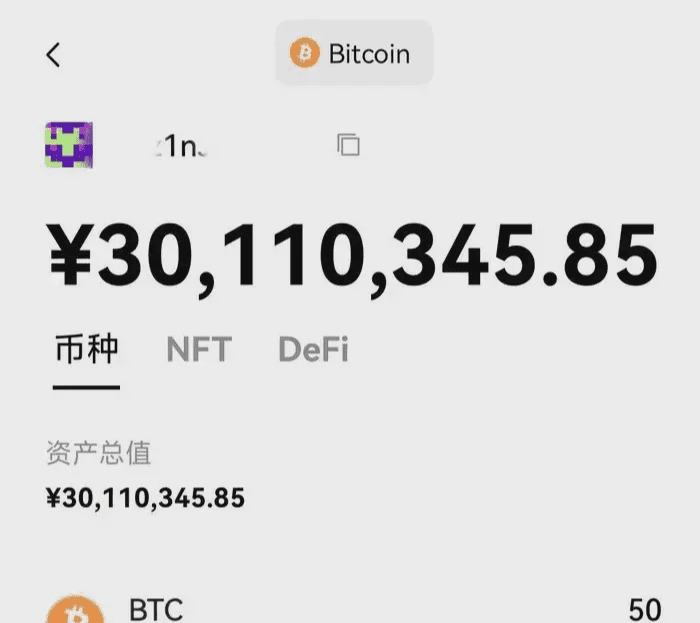
1. In most cases, Bitcoin is the leader of ups and downs in the crypto market; Ethereum, with its strong quality, may sometimes break away from Bitcoin's influence and move in a single direction, while altcoins generally cannot escape its influence.
2. Bitcoin and USDT move inversely; if you notice USDT rising, be cautious of Bitcoin dropping; when Bitcoin is rising, it is a suitable time to buy USDT.
3. The period between 12 AM and 1 AM is prone to price manipulation; therefore, domestic crypto friends can try to set low buy prices and high sell prices for their desired coins before sleeping; you might just get filled and earn while you sleep.
4. The period between 6 AM and 8 AM is a good time to judge buying or selling, as well as a point to assess daily rises and falls. If from midnight to 6 AM it has been falling, it is likely to be a buying or averaging down opportunity; if it has been rising, it is a selling opportunity, and it is likely to fall during the day.
5. 5 PM is an important time point that is rumored in the industry; due to time zone differences, American crypto friends are waking up to work, which may cause fluctuations in coin prices. Some significant rises or falls have indeed occurred at this time, so pay special attention.
6. There's a saying in the crypto world about 'Black Friday'; there have been a few instances of significant drops on Fridays, but there have also been cases of major rises or sideways movements, so it's not particularly accurate; just pay attention to news.
7. If a coin with a certain trading volume drops, don’t worry; be patient, it will definitely recover, which could be short in 3-4 days or long in a month. If you have extra USDT, add positions in batches to pull the price down; recovery will happen faster. If you don't have extra money, just wait; it won't disappoint you unless you've really bought an I coin.
8. Trading spot: Holding the same coin for the long term yields greater returns than frequent trading; it just depends on your patience. I bought Dogecoin at 0.1 and have held it until now, multiplying over 20 times in the crypto market.
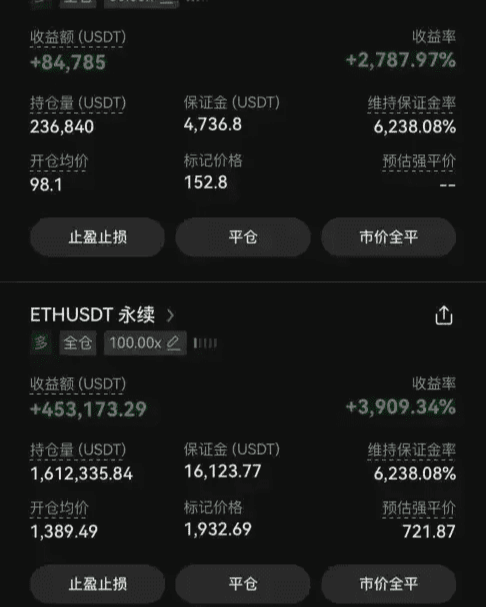
Today, I will share some practical tips; these experiences are worth 60 million, I hope they can help you.
1. Choose the right platform: Avoid 'eating customer losses'.
Preferred platforms for trading: Binance, OKX (low fees, good depth, no lag), avoid smaller platforms (2023 data from a certain platform shows malicious price manipulation leading to collective bankruptcies among users).
Key Indicators: Check 'Funding Amount' (over 1 billion USD), 'Number of Positions' (over 500,000), 'Historical Needle Insertion Records' (the fewer, the better).
2. Position Control: Use the '1% rule'.
Protect the principal for each single position: Each time you open a position, do not exceed 1% of total funds (example: for a principal of 100,000, do not use more than 1,000 as margin for a single position).
Total Position Limit: The margin for all contracts must not exceed 20% of total funds (to avoid simultaneous liquidation of long and short positions).
Example: With a principal of 10,000 and under 10 times leverage, the margin for a single position should be ≤100 (corresponding to a contract value of 1,000), total position margin ≤2,000.
3. Technical Analysis: 3 key indicators to help you determine direction. MA Moving Average: When the 50-day moving average crosses above the 100-day moving average (golden cross), it is bullish; when it crosses below (dead cross), it is bearish.
MACD: Red bars lengthen (bullish strength), green bars lengthen (bearish strength), divergence signals (price rises while bars shrink, possibly indicating a peak).
Support and Resistance Levels: Check previous highs and lows (for example, 32,000 for Bitcoin is strong support, and 40,000 is strong resistance), open positions in the direction of the breakout.
4. Order Placement Skills: Seize the golden opportunity during 'sharp drops and spikes'. Open long after a sharp drop: If the price drops over 5% and hits a strong support level (for example, Bitcoin drops to 28,000 in May 2025, rebounding 2% within 30 minutes, going long can earn 20%).
Shorting during a spike: If the price rises over 10% in a short time and reaches a resistance level (for example, if Bitcoin fails to break through 45,000 and quickly falls back, shorting can yield a 15% profit within an hour).
Taboo: Do not open positions during sideways fluctuations (70% of the time is in fluctuation; frequent operations will definitely incur losses).
5. Position Closing Strategy: Money made is real money. Target achieved closing: Immediately take profit upon reaching preset returns (e.g., 20%), don’t be greedy.
Breakout Stop-Loss: Unconditional stop-loss if it breaks support/resistance levels (example: after going long, if the price drops below the previous low, run immediately, don’t bet on a rebound).
Time Stop-Loss: Force liquidation if the position has been open for more than 4 hours without reaching expectations (to avoid staying up all night watching the market; 2023 statistics show that users with positions exceeding 12 hours have a 3-fold increase in liquidation rates).
3 Core Concepts Every Newbie Must Learn: Understand these 3 points to avoid losing 80% of your principal!
1. Leverage: Not a double-edged sword, but a 'dragon-slaying knife'. Commonly used leverages: 10 times (low risk), 50 times (medium), 100 times (for experts only).
Fatal Misunderstanding: 100 times leverage ≠ earning 100 times; instead, 'a 1% fluctuation results in a 100% loss of principal' (example: with 100 times leverage, a principal of 10,000 buys assets worth 1 million; a 1% drop results in a loss of 10,000, leading to immediate liquidation).
Iron Rule: Newbies should only use 10-20 times leverage, and experienced traders should not exceed 50 times (2023 statistics: 99% of users who used 100 times leverage went bankrupt within 3 months).
2. Stop-Loss and Take-Profit: The 'life-saving charm' more important than making money. Stop-Loss: Set in advance 'how much loss requires running' (example: for a principal of 10,000, set stop-loss at 5%, if losing 500, automatically liquidate to avoid holding to liquidation).
Take-Profit: Automatically cash out when the target return is reached (example: if you expect to earn 20%, sell immediately after making 2,000 profit to avoid a reversal and losses).
Real Case: In 2024, Bitcoin flashed crash by 30%, users who set a 10% stop-loss only lost 10% of their principal, while those who did not set stop-loss went to zero.
3. Funding Rate: The 'hidden mechanism' principle of earning money from the opposing side while lying down: When long and short positions are imbalanced (for example, 80% of users are long), the platform will require long position users to pay funding fees to short position users, and vice versa.
Practical Tips: In extreme market conditions (such as Bitcoin breaking through key resistance levels), open a small reverse position to earn funding fees, which can yield daily returns of 0.1%-1% (2025 data from a certain platform: users who consistently earn funding fees have a stable annual return of over 15%).
3 Advanced Strategies Used by Experts
1. Hedging Strategy: The 'winning formula' that makes money in both rising and falling markets. Operation: Open both a 10 times long position and a 10 times short position (each occupying 5% of the position); when the price fluctuates more than 2%, close the losing position and hold the profitable position.
Case Study: Bitcoin oscillates between 30,000 - 40,000, using a hedging strategy to earn a stable 5%-10% each month, with risks close to zero.
2. Laddered Position Increase: The 'bottom-fishing tool' during a crash. Steps: When the price drops by 10%, open a 1% position long; drop another 10%, open a 2% position; drop another 10%, open a 3% position, and so on. Advantage: Reduces average cost; a 15% rebound is enough to turn losses into profits (example: if you go long at 30,000 and it drops to 24,000 with a total position of 6%, a rebound to 27,600 will recover the investment).
3. Capital Management: Use the 'liquidation price calculator' as a life-saving tool: Input margin, leverage, and position size into the exchange app to automatically calculate the liquidation price (example: with 10 times leverage and 10,000 margin, the liquidation price = opening price - opening price × 10%).
Iron Rule 4: Ensure the liquidation price is at least 20% away from the current market price (for example, if Bitcoin is long at 30,000, set the liquidation price at 24,000 to leave sufficient buffer space).
Contracts are not ATMs, but 'cognitive monetization' battlefields!
1. Practice on a demo account first: Use 10,000 virtual funds to practice for 3 months. Recommended platform: Binance 'Contract Simulation Account', which replicates real trading 1:1, and can be reset if you lose everything.
Goal: Achieve 'not getting liquidated within 3 months and a win rate exceeding 50%' before depositing real funds for practice.
2. Always remember: Contracts are 'icing on the cake', not a 'gamble for a turnaround'.
Correct Mindset: Use no more than 20% of spare money to trade contracts; your main income is fundamental (for a worker earning 3,000 monthly, it's fine to use 600 to trade contracts, without risking all savings).
3. Liquidation is not the end, but the beginning of growth. Every liquidation is the best teacher: record the reasons for liquidation (was the leverage too high? Was there no stop-loss set? Or was it emotional trading?), and form your 'pitfall avoidance guide'.
Today, I will talk about a summary of my years of trading experience as a free share, hoping to help everyone!
If you want to change your fate, you must try the cryptocurrency market; if you cannot make money in this circle, ordinary people will have no opportunity in this lifetime.
I believe that excellent traders must be able to be patient to endure prosperity!
Frequent small profits and exiting indicate limited ability to judge market conditions; you cannot accurately predict price fluctuations. The best solution is to improve your trading skills for better judgment and analysis of investment targets.
Next, I will share some trading experiences in hopes of helping investors in need:
I. Choose familiar coins, and do not pay attention to too many varieties. Understand the relationship of price fluctuations to better grasp price trends; also, do not focus on too many varieties from an investor's perspective; human energy is limited, and it is impossible to make profit from all different varieties; do not challenge your limits.
II. The Importance of Position Management: If not managed properly, the entire principal can be lost with no chance of recovery. Here, it is recommended that the margin for positions occupy about 30% of the capital, and not exceed 50%. Of course, when encountering favorable market conditions, you can appropriately increase your position. Two points to note during trading: First, do not add to your position when in floating profit; second, do not add to your position when in floating loss. Learning to wait is a required lesson in trading.
III. Develop a trading plan; do not trade frequently. Frequent trading consumes a lot of energy, and trading costs can be relatively high. In uncertain market conditions, finding profitable opportunities is not easy; if the outcome is not good, it will not only deplete the principal but also affect yourself.
IV. Maintain a good mindset during trading, enhance learning, summarize often, and exercise more.
V. Set stop-loss and take-profit levels; take profits promptly and do not hold onto losing positions. The main reason for losses is often due to holding onto positions.
Technical Knowledge
1. Introduction and practical explanation of the Bollinger Bands indicator 2. Dow Theory 3. Revelation of main chip distribution 4. Introduction and practical explanation of the KDJ indicator 5. Elliott Wave Theory 6. What are resistance and support? 7. What is a trend and how to judge it? 8. Random Index, Random Index 9. How to apply Fibonacci? …
Basic Knowledge
1. What is a digital currency futures contract?
(1) Definition of futures contracts.
(2) Types of contracts.
(3) Three elements of futures contracts.
2. What is leveraged trading in digital currency?
(1) What is leverage?
(2) Example of leveraged trading
3. What is the principle behind hedging and risk reduction?
(1) What is hedging?
(2) What to do if you buy high in the crypto market?
(3) How to hedge in the digital currency market?
4. Key Points to Note in Contract Trading.
(1) How to allocate positions?
(2) Where should stop-loss and take-profit positions be set?
II. Supply and Demand Trading Method to Find Key Intervals.
The relationship between supply and demand is the same in any market: when the supply and demand relationship begins to show imbalance, prices will move or reverse. The supply zone is where professional traders short, while the demand zone is where professional traders buy.
Demand zones generally have two forms of manifestation.
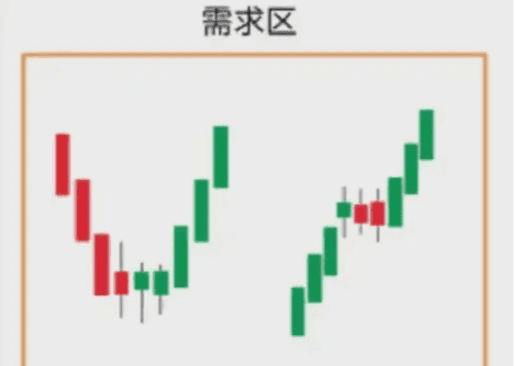
First Type: Falling, entering the zone, rising.
Second Type: Rising, entering the zone, rising.
Similarly, supply zones also have two forms of manifestation:

First Type: Rising, entering the zone, falling;
Second Type: Falling, entering the zone, falling.
So when we see a demand zone, what should we do?
In the market, when a demand zone appears, we expect the price to rise here; when the price retraces to the demand zone, we buy.
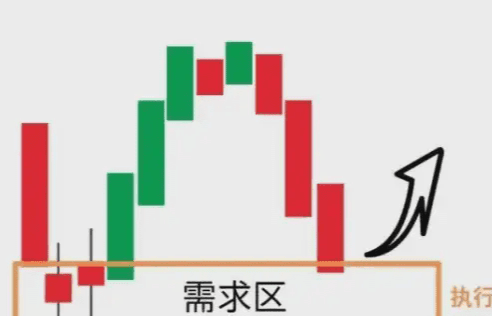
Supply zones are the opposite of demand zones. We expect prices to fall here; when the price retraces to the demand zone, we sell.
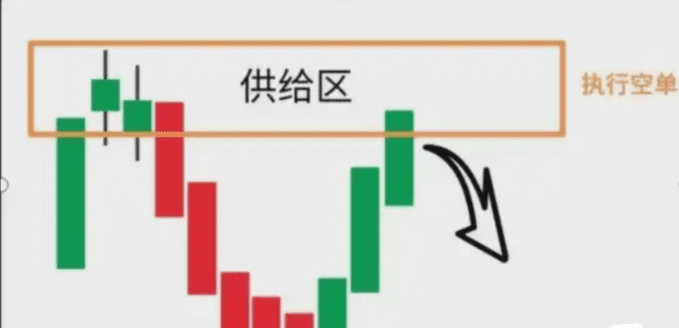
In simple terms, rising flat rising and falling flat rising require setting long positions, while rising flat falling and falling flat falling require setting short positions.
Let me give you an example; I'll take the most typical example from the 519 period!
At that time, it was a very good entry point, and soon after this demand zone formed, the price returned to the demand zone multiple times (i.e., when it was at the 30,000 USD position), this demand zone is likely to be a good trading opportunity.
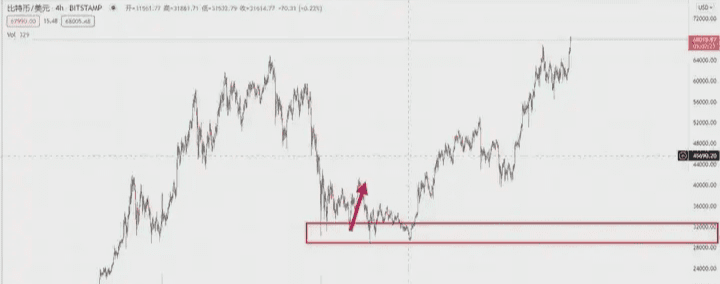
If the price continues to fall after the first retracement, we will see the price surge in the demand zone. Referring to the market at that time, after the drop below 30,000 USD the second time post-519, there was a nice rebound. Because we have just mentioned, similar to the principle of the supply zone, if institutions still have unexecuted long contracts in the demand zone, they will pull the price back to the area in a short time.
III. Use Fibonacci to find positions.
Fibonacci retracement is the most commonly used method in trading to find support and resistance levels.
Generally, we will pull the highest price point of a certain time period to the relatively lowest price point; the 9 straight lines formed during this process (line segments) are the retracement levels that need to be focused on, as each line has a certain support or resistance effect, which is related to the position of the market.
(1) Patiently hold for a breakout.
The Fibonacci retracement line drawn on short cycles of 1-4 hours can be bought at the 0.236 position, which is relatively safe, as it will definitely test the 0.382 position; at this point, you should exit to prevent pullbacks!
(2) High sell low buy take profit.
The Fibonacci retracement line used in daily charts can be bought at the 0.236-0.382 positions, capturing short-term profits nicely.
(3) Be cautious when pulling teeth from a tiger's mouth.
Be especially cautious in the 0.382-0.618 zone, as there are many possibilities for a trend change; try to avoid using small cycles.
(4) High level breakouts must pull back.
The 0.618 position will definitely be tested for a pullback, so entering at this point generally yields good profit!
The example of Fibonacci retracement lines is not very good, and when drawing lines, do not combine one time period; use multiple time periods and cycles, and look for high and low points. However, it is worth noting that this is still quite useful; it can also be used for short-term trading in spot markets, buying at support levels and selling at resistance levels.
That's about it; contracts are gambling, but many people still can't resist the temptation of overnight wealth. Of course, I’m not saying you shouldn’t trade digital currency contracts; the purpose of writing this article is to help you trade contracts rationally. Therefore, I hope this content is helpful to everyone!
I only do real-time trading; the team still has positions available, hurry up.


